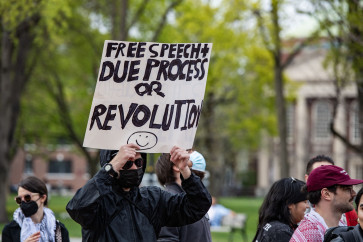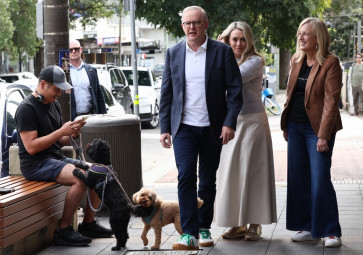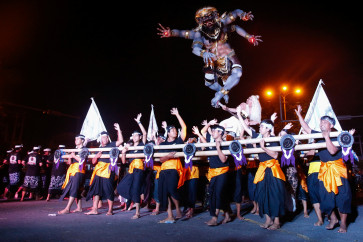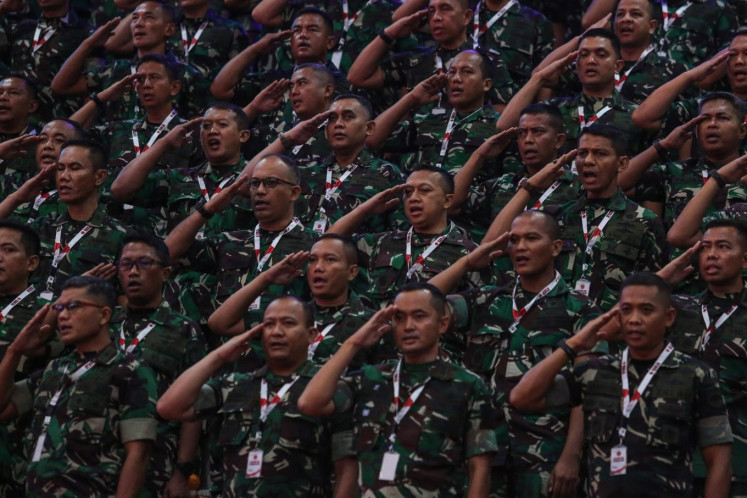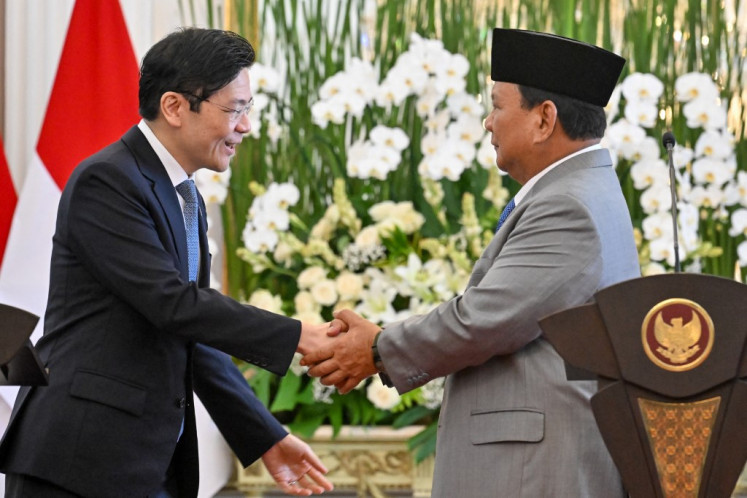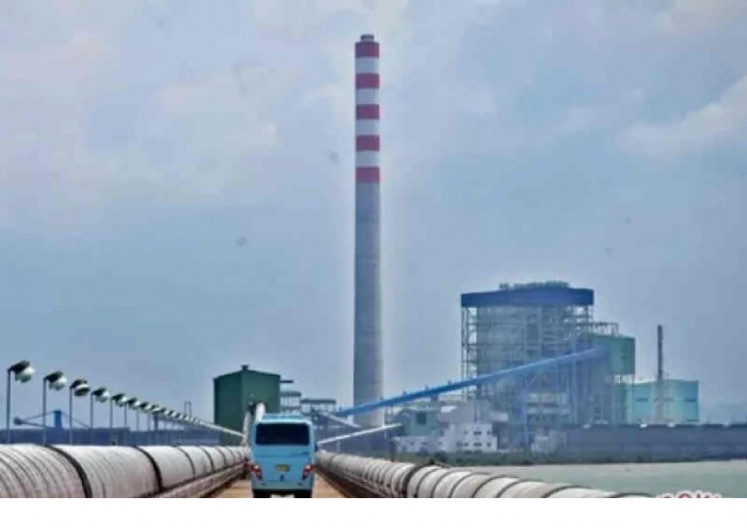Remote working, cloud-seeding have little effect on Jakarta pollution
Jokowi says strategy needs more time to work.
Change text size
Gift Premium Articles
to Anyone
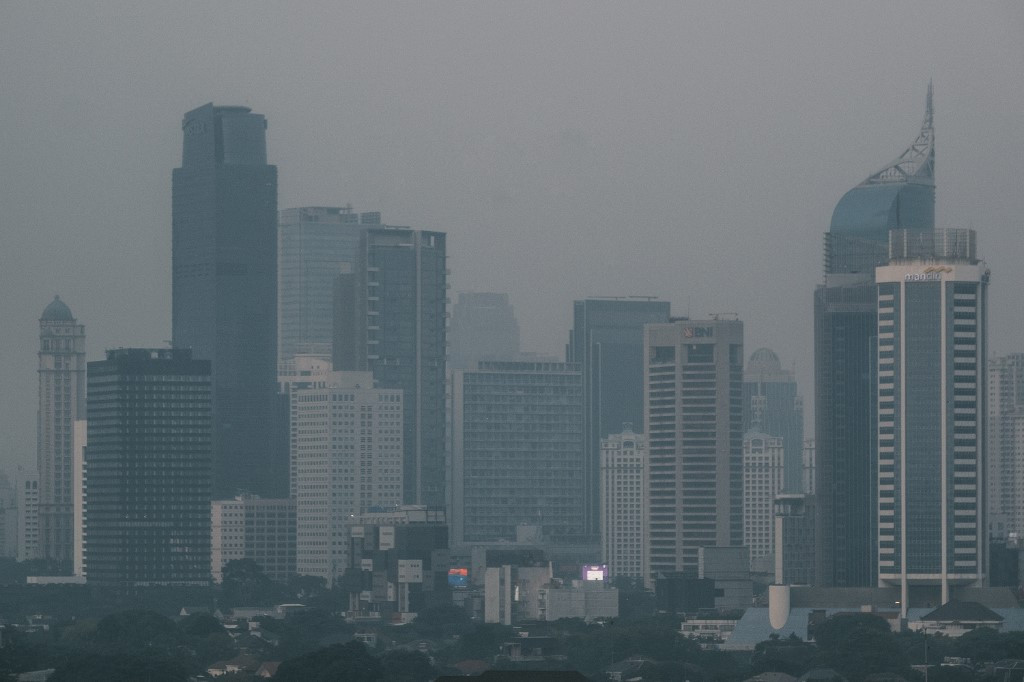
I
ntensified measures to tackle Jakarta’s choking pollution, especially remote working and weather modification, have so far had little success in clearing the capital’s foul atmosphere.
Last week, the Jakarta city administration ordered half of its public employees to work from home until Oct. 21. The policy was expanded to 75 percent of city officials whose workplaces are close to next week’s ASEAN Summit venue.
The administration employs 200,000 staff, 60,000 of whom are civil servants.
The remote working policy was designed to cut emissions from motorized vehicles that the city often blames as the main source of air pollution and which have worsened recently, putting Jakarta top of the list of the world’s most polluted cities, according to a ranking issued by Swiss air quality technology company IQAir.
In an attempt to wash away the clinging smog, authorities have attempted cloud-seeding to create man-made rain over Jakarta, as the prolonged dry season has also been blamed for exacerbating pollution from vehicles and industrial activities in recent months.
In the past few days, a joint team comprising officials from the Meteorological, Climatology and Geophysics Agency (BMKG), the National Disaster Mitigation Agency (BNPB), the National Research and Innovation Agency (BRIN) and the Air Force sowed more than 5 tonnes of salt and quicklime to generate rain in Greater Jakarta.
Such efforts have been deemed relatively unsuccessful because of a lack of clouds over Jakarta, although some parts of the city and its surrounding area reported moderate to heavy rain in the last few days.
Read also: Critics denounce govt’s methods in tackling Jakarta pollution
Despite the measures, however, Jakarta’s air quality has barely improved. On Wednesday morning, Jakarta scored 177 or “unhealthy” for the air quality index (AQI) based on measurements from IQAir.
At the same time, the concentration of the main pollutant found in Jakarta’s air, PM2.5 fine particulate matter, reached 105.1 micrograms per cubic meter (µg/m3) of air, 21 times the safe level recommended by the World Health Organization (WHO).
Wednesday morning’s AQI was around 20 levels higher than the 154 recorded on Aug. 14, when President Joko “Jokowi” Widodo held a limited cabinet meeting on tackling Jakarta pollution. During the meeting, the President discussed short and long-term efforts to curb pollution with ministers and regional leaders.
The AQI improved to 154 as of 4 p.m. on Wednesday, although still unhealthy according to IQAir. But the PM2.5 was still 52.8 µg/m3, 10 times higher than the WHO safe level.
‘Gimmicks’ won’t work
Amid the lack of progress made by recent government efforts, the Center for Research of Energy and Clean Air (CREA) insisted that the remote-working policy and “other gimmicks” would not solve the Jakarta air pollution problem.
The think tank argued that the pollution was a mix of local emissions from within the city and those coming from neighboring regions. “This means Jakarta needs a regional action plan tackling all major emitting sectors, not a gimmick targeted at a very small part of the problem,” said CREA in a recent statement.
CREA’s analysis of Jakarta air data between 2020 and 2023 found that several sectors were key sources of pollution, namely coal-fired power plants, industry, transportation and open burning.
But the drastic reduction in the number of commuters and vehicles in the city due to mobility restrictions during the COVID-19 pandemic did not necessarily lead to an improved air quality, the analysis found. The average concentration of PM2.5 was still seven to nine times higher than the WHO recommendations, suggested that the pollutants came from other sources.
Just on Wednesday in Semarang, Central Java, Jokowi said the strategy needed time to work. “We have a lot to do and we need support from all. So, let’s work together.”
Read also: Breathless: Workers pessimistic over plans to curb Jakarta air pollution
Environment and Forestry Minister Siti Nurbaya Bakar said on Monday that coal-fired power plants were the second-biggest contributors to the city’s poor air quality, after the emissions from vehicle internal combustion engines.
She pledged to carry out stricter monitoring of coal-fired power plants and industrial activities that contributed to the city’s air pollution.
The environment ministry’s task force has named several suspects and closed down businesses linked to the city’s worsening air. It has also sanctioned several businesses for not meeting government-set environmental standards.
Despite the limited impact, authorities are planning to continue the efforts to tackle the pollution, including mist spraying from tall buildings and spraying water on major roads across the city.
The mist spraying, Siti said, was a micro-scale alternative to the cloud-seeding approach. She claimed that limited trials on such an approach had succeeded in lowering air pollution in the surrounding area.
A study conducted in China, published in the journal Toxics in 2021, however, revealed that water spraying on major roads only exacerbated pollution as it added to PM2.5 concentrations rather than reducing them.
The environment minister said authorities had ramped up emissions testing and random checks on vehicles on the roads, especially those that are more than three years old.
Satellite cities, such as Tangerang in Banten and Depok in West Java, have also recently announced plans to impose remote working on 70 percent of their public employees.

